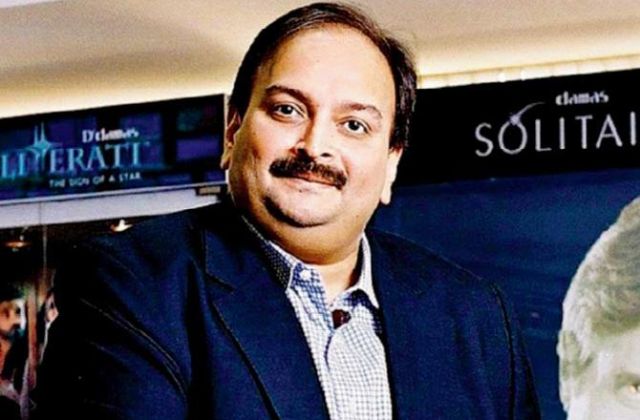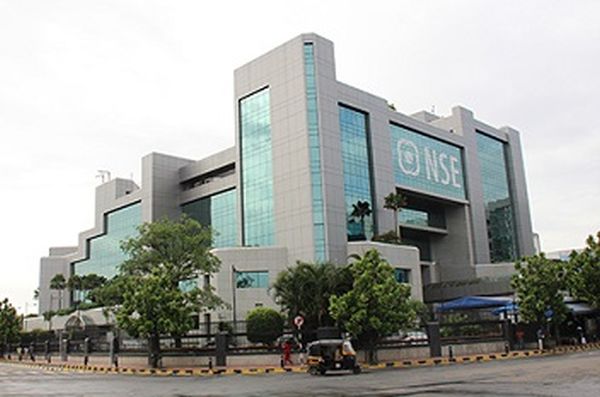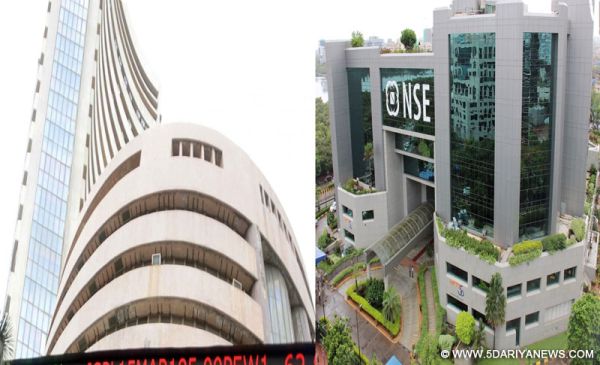
by admin | May 25, 2021 | Economy, News, Politics

Mehul Choksi
New Delhi : After fugitive diamantaire Mehul Choksi was reportely located in the small Carribean island nation of Antigua, the Congress on Wednesday accused the Narendra Modi government of “hurriedly” bringing the Economic Offender Fugitive Bill in Parliament as a “face-saving exercise.”
“Three months after PM Modi meets Antigua’s Prime Minister Gaston Browne, Mehul Choksi gets Antigua’s passport,” said Congress leader Rajeev Gowda at a press conference.
Modi had met his Antiguan counterpart in London in April this year on the sidelines of the Commonwealth Heads of Government Meeting.
“Nirav Modi (another fugitive jeweller in the PNB fraud) i.e. Chhota Modi is globetrotting and Prime Minister Modi’s ‘Mehul Bhai’ i.e Choksi gets an Antigua passport after Nirav visited China, Belgium, UK, US, UAE and Hong Kong.
“Investigation agencies such as the Central Bureau of Investigation and Enforcement Directorate (ED) have failed to get a ‘red corner notice (RCN)’ issued against him (Choksi) till today,” Gowda said.
Gowda also said: “Modi government is hurriedly trying to hide behind the Fugitive Economic Offenders Bill as it has failed in its fight against black money.”
“After four years, deposits in Swiss banks have gone up by 50 per cent. When cornered on these hard facts, a rattled Finance Minister Piyush Goyal is flashing new statistics, new methodology and newer lies to mislead the people,” he said.
He also asked what happened to Modi’s promise of bringing back Rs 80 lakh crore of black money stashed aboard.
“There are wide legal loopholes in the hurriedly brought Fugitive Economic Offenders Bill. If the constitutionally problematic sections are struck down, nothing worthwhile shall remain in the bill,” said Gowda.
Noting that if black money moves out of India, “it doesn’t move in a direct manner from India to Switzerland, but via various tax havens like Cayman Islands, Hong Kong etc”, he said that Nirav Modi and Choksi also went to Hong Kong and UAE, but the Modi government was not revealing this.
To a question on increase in FDI inflow and money coming from Cayman Island, Congress leader Gourav Vallabh said: “You will be surprised that majority of money comes from all the tax havens.”
“The money in Swiss accounts is reduced to a drastic level and the money goes to some other tax havens and from that tax havens it enters the country and that precisely is called a ‘round tripping’.”
—IANS

by admin | May 25, 2021 | Commodities, Commodities News, Economy, Markets, News
 New Delhi : In a relief for common man, the GST Council on Saturday reduced tax rates on over 50 items including refrigerators, washing machines and small televisions, which would now be taxed at 18 per cent, down from the current 28 per cent.
New Delhi : In a relief for common man, the GST Council on Saturday reduced tax rates on over 50 items including refrigerators, washing machines and small televisions, which would now be taxed at 18 per cent, down from the current 28 per cent.
Apart of bringing down rates, the Goods and Services Tax (GST) Council also exempted GST on sanitary napkins, rakhis, fortified milk and idols of deities made of stone, marble and wood.
The changes would come into effect across the country from July 27 onward, Finance Minister Piyush Goyal told media after the 28th meeting of the GST Council.
“Refrigerators, small televisions, of upto 25 inches, lithium ion batteries, vacuum cleaners, domestic electrical appliances, such as food grinders, mixers….storage water heaters, immersion heaters, hair dryers, hand driers, electric smoothing irons,” among others have been brought to the 18 per cent slab,” Goyal said.
The council also gave a major relief to the hotel industry by providing that tax rate shall be based on transaction value instead of declared tariff.
Earlier, there was a lack of clarity on the issue causing a lot of trouble for consumers booking hotels with ‘declared tariffs’ of Rs 7,500 and above which incurred 28 per cent GST.
While hotels with tariff below Rs 1,000 are exempted from GST, those with tariff between Rs 1,000-2,500 are taxed at 12 per cent, those between Rs 2,500-7,500 at 18 per cent, and above Rs 7,500 at 28 per cent.
However, it often happened that hotels offered discounts and hence the actual transaction cost would be much lower than the declared cost, but tax would still be charged at the declared cost.
Another significant decision the council made was regarding easing of return filing procedure by approving two new simplified forms called ‘Sugam’ and ‘Sahaj’, the minister said.
Also, enterprises with annual turnover of upto Rs 5 crore would have to file quarterly returns instead of the current monthly filing, although they would continue to pay tax on a monthly basis.
However, the implementation of the revamped return filing process would take some time as corresponding changes would have to be made into the GST network, the minister clarified.
The council also deferred the implementation of reverse charge mechanism by another year and now it will come into force from October next year.
The minister further informed that the council would have a special meeting on August 4 to address concern of small and medium enterprises.
Among other tax-reduction decisions, Goyal said, tax rate on handicraft items such as handbags, pouches and purses, jewellery box, wooden frames of paintings and photographs among others have been brought under the 12 per cent slab, from 18 per cent.
GST on handmade carpets and handmade textile floor coverings has been reduced from 12 per cent to 5 per cent.
The tax rate on ethanol, which is used in the blending of petrol and diesel also has been brought down to 5 per cent from 18 per cent.
During the meeting, the council also made certain amendments to the GST Act including raising the upper limit of turnover for opting for composition scheme from Rs 1 crore to Rs 1.5 crore.
It also approved an amendment which will enable taxpayers to opt for multiple registrations within a state in respect of multiple places of business located within the same state.
—IANS

by admin | May 25, 2021 | Economy, Markets, News
 By Rituraj Baruah,
By Rituraj Baruah,
Mumbai : Weak global cues, along with higher inflation and a no-trust vote in Parliament, subdued the key Indian indices in the week-ended Friday.
Weakening of the Indian rupee to fresh lows during the week also eroded investor sentiments in the Indian equity market, analysts said.
However, the Indian currency recovered and appreciated on Friday, thereby lifting the indices on a daily basis and restricting further decline in the equity market compared to the previous week’s close.
Significantly, on Wednesday the benchmark BSE Sensex hit a fresh record high of 36,747.87 points, but could not hold on to the gains.
On a weekly basis, Sensex closed at 36,496.37 points — down 45.26 points or 0.12 per cent from the previous close.
The wider Nifty50 on the National Stock Exchange (NSE) settled at 11,010.20 points, down just 8.7 points or 0.08 per cent — from its previous week’s close.
The market breadth was negative in four out of the five trading sessions of the week, according to Deepak Jasani, Head of Retail Research at HDFC Securities.
“Weak global cues and the no-confidence motion in the monsoon session of Parliament dented the sentiment across the street,” said Parteek Jain, Director of Hem Securities.
Moreover, ahead of the F&O expiry in the coming week, traders were seen squaring off their positions, Jain added.
Rahul Sharma, Senior Research Analyst at Equity99 noted: “Stock-specific action continued as sentiment was partially hit after index heavy-weight like Bajaj Auto and Kotak Mahindra Bank missed market expectations.”
The no-confidence motion vote had a limited impact on market sentiments as the ruling party was sure of its majority in Parliament, he said.
Earlier in the week, the rise in the wholesale inflation rate for June depressed the equity indices.
The wholesale inflation rate for June was recorded at 5.77 per cent, compared to 4.43 per cent in the previous month, according to data released on Monday.
On the currency front, the rupee closed at 68.85 on Friday, strengthening by just 3 paise from its previous week’s close of 68.88 per greenback.
On Thursday, the rupee touched a fresh closing low of 69.05 per dollar. Minutes into the trade on Friday, it hit an all-time low of 69.12 against the greenback but eventually bounced back sharply and helped end the currency trade with appreciation on a weekly basis.
According to Jasani: “Strengthening US dollar, weakening Chinese yuan, domestic political uncertainty, buoyant crude prices and capital outflows have all resulted in pressurizing the rupee lately.”
In terms of investments, provisional figures from the stock exchanges showed that foreign institutional investors sold scrip worth Rs 1,209.41 crore, while the domestic institutional investors purchased stocks worth Rs 1,300.06 crore in the week bygone.
Figures from the National Securities Depository (NSDL) revealed that foreign portfolio investors (FPIs) divested Rs 888.70 crore, or $129.80 million from the equities segment on stock exchanges during the week ended on July 20.
Sector-wise the major gainers in the week were energy, public sector banks and IT, while metals, realty, pharma and auto were among the major losers, HDFC Securities’ Jasani told IANS.
The top weekly Sensex gainers were Infosys (up 3 per cent at Rs 1,348.35); Reliance Industries (up 2.90 per cent at Rs 1,128.55); Yes Bank (up 2.72 per cent at Rs 386.65); ONGC (up 2.10 per cent at Rs 157.85); and Asian Paints (up 2.08 per cent at Rs 1,396.90 per share).
The major losers were Tata Steel (down 9.80 per cent at Rs 503.45); Bajaj Auto (down 9.35 per cent at Rs 2,841.10); Tata Motors (DVR) (down 6.32 per cent at Rs 140.80); Kotak Mahindra Bank (down 5.08 per cent at Rs 1,333.45); and Hindustan Unilever (down 4.88 per cent at Rs 1,656.20 per share).
(Rituraj Baruah can be contacted at rituraj.b@ians.in)
—IANS

by admin | May 25, 2021 | Opinions
 By Taponeel Mukherjee,
By Taponeel Mukherjee,
For ideal risk management in infrastructure finance, it is vital that the capital market infrastructure and the microstructure of the financial market aid such effective risk management. For the Indian economy, infrastructure investors must have access to more financial instruments to hedge risks. Essentially, the financial markets require greater microstructure.
India needs a liquid bond future to be the central focal point of the market. True, past attempts to create a functional bond futures market haven’t yielded the required results. But from a risk management perspective, a bond future such as the US Ten-Year Future or the Japanese Government Bond Future is central to hedge outright “duration risk”. Because this future allows market participants to hedge the risk from an outright movement in interest rates and instead switch into “curve risk”.
In common parlance, “curve risk” is the risk from the movement in the interest rate differential between two points on the yield curve. The not-so-successful attempts in the past have valuable lessons for us which must be factored in future attempts in this regard.
To further boost long-dated debt markets, the importance of improving liquidity across the government bond curve, especially in the long-dated tenors beyond 20 years, is beyond question. Having a deep and liquid government bond market will allow market participants to hedge “curve risk”.
For example, for an investor who wants to lend for 25 years to a corporate entity (through a loan or a corporate bond), the investor is primarily interested in the risk of the corporate balance sheet. The investor’s interest is driven by their expertise that allows them to value and understand corporate credit.
With both “duration risk” and “curve risk” hedged, the investor is left with the “spread risk” between the 25-year bond issuance and the government curve. Enabling investors to get access to instruments that allow them to manage risks they specialise in, will be the real driver behind creating successful long-end lending in Indian infrastructure.
Additionally, India needs to develop the onshore interest rate swap market further. The Reserve Bank of India (RBI) has initiated steps to improve liquidity in this market, but we need to continue to do so in the foreseeable future. Swaps allow investors and market participants to hedge duration (outright interest rate risk) and have exposure to the spread risk between the bond and the swap rate.
As an example, if a highly rated government agency was involved in the construction of infrastructure projects and wanted to issue 30-year debt to finance the project. A liquid swap market would enable more market participants to subscribe to the bond if they can hedge the interest rate risk using an interest rate swap.
The investor investing in the bonds is primarily interested in the credit quality of the agency issuing the bonds. The investor’s expertise might be exclusively in analysing the “spread risk” and not necessarily in predicting the direction of interest rates. A functional interest rate swap market will allow both the investor who is comfortable taking the outright interest rate risk and the investor who is solely interested in the “spread risk” to be a market participant. Essentially, a more significant pool of capital can be mobilised through the availability of swaps.
The creation of liquid and functional markets in bond futures, government bonds and interest rate swaps is essential for infrastructure financing in India. These instruments allow the infrastructure market participants to allocate the various risks to the institution best equipped to manage the risk, thereby leading to an efficient market.
For infrastructure projects and companies to succeed not only must construction, legal and operational risk be allocated to the institution best equipped to handle the risk, but also the financial risks in the market be allocated to the institution best equipped to handle it. Not only is the risk managed better, but the cost of credit is lower for good financial assets as market specialists can charge the right risk premium instead of overcharging to create a buffer for a risk they are ill-equipped to manage.
A functional financial market also reduces the dependency on bank loans to finance infrastructure in India. Less reliance on banks for infrastructure financing ought to be a priority, especially considering the issues Non-performing loans (NPAs) plaguing the banking sector.
The development of current capital markets for a more robust financial microstructure will involve deregulation of markets to an extent like allowing greater foreign participation in Indian financial markets. For sure, allowing foreign participation in financial markets will add volatility to markets. However, despite the increased volatility, well developed financial markets are worth considering as a tool to boost Indian infrastructure. Additionally, it is hard to obtain a Pareto-optimal policy decision.
(Taponeel Mukherjee heads Development Tracks, an infrastructure advisory firm. The views expressed are personal. He can be contacted at taponeel.mukherjee@development-tracks.com or @Taponeel on Twitter)?
—IANS

by admin | May 25, 2021 | Economy, Markets, News
 By Rituraj Baruah,
By Rituraj Baruah,
Mumbai : After reaching new landmarks in the last couple of trading sessions, the key Indian equity indices are likely to witness another eventful week (June 16-20), with major quarterly earnings and a key macro-economic data point, the Wholesale Price Index, due in the next few days.
According to market observers, further developments in the ongoing trade tensions between the US and China also would set the cues for the global markets.
“The markets next week would look forward to the earnings season as larger companies such as HUL (Hindustan Unilever), Bajaj group of companies will come out with their results,” said Devendra Nevgi, founder and Principal Partner at Delta Global Partners.
According to Geojit Financial Services’ Head of Research, Vinod Nair: “Market is expecting 19 per cent growth in PAT (profit after tax) for Sensex index stocks and 14.7 per cent for Nifty50 index stocks in Q1, FY19 compared to a washout in last quarter.”
“From here on market trend will largely depend on progress of results season,” he said.
Gaurav Jain, Director of Hem Securities said: “We will continue to see stock-specific approach as heavyweights like HDFC Bank, Hindustan Unilever, Ashok Leyland, Zee Entertainment, Ultratech Cement, MindTree, Bajaj Finance, and Kotak Mahindra Bank are scheduled to report their quarterly earnings.”
On the macro front, the government will announce wholesale price inflation (WPI) for June 2018 on Monday, July 16, Jain added.
Further, on the global side, markets would be hoping for easing of trade related issues between the US and China, said Sanjeev Zarbade, Vice President for Research at Kotak Securities.
Noting the significance of oil prices, Zarbade said: “Crude oil prices have corrected a bit and further softening in prices would be positive for global markets”.
In the week ended Friday, fall in crude oil prices was a major factor for the positive trend in the global and domestic equity markets.
As per Delta Global Partners’ Nevgi, the fall in crude prices and weaker US dollar would help the sentiments in the rupee market.
On Friday, the Indian rupee closed at 68.53, strengthening by 35 paise from its previous week’s close of 68.88 per greenback.
Talking on the investor sentiments in the Indian equity market, Nevgi told IANS,the support comes from domestic investors as foreign ones continue to be net sellers.
In the week gone by, provisional figures from the stock exchanges showed that foreign institutional investors sold scrip worth Rs 1,801.65 crore, while the domestic institutional investors purchased stocks worth Rs 2,288.08 crore.
During the upcoming week, Deepak Jasani, Head of Retail Research at HDFC Securities feels, “further upsides are likely, once the immediate resistance band of 11,078-11,171 (Nifty50) is taken out.”
The level of 10,893 points would be a crucial support for the Nifty50 on the National Stock Exchange, he added.
On Friday, the Nifty50 closed at 11,018.90 points — up 246.25 points or 2.29 per cent — from its previous week’s close.
The Sensex on BSE rose by 883.77 points or 2.48 per cent to close at 36,541.63 points on a weekly basis.
On Thursday, the barometer 30-scrip Sensex touched a record high of 36,699.53 points, only to surpass the level the very next day and set a fresh all-time high of 36,740.07 points.
It had also set a new closing high of 36,548.41 points on Thursday.
With another eventful week expected to follow, these instances of fresh benchmarks and landmarks, may not end here.
(Rituraj Baruah can be contacted at rituraj.b@ians.in )
—IANS





